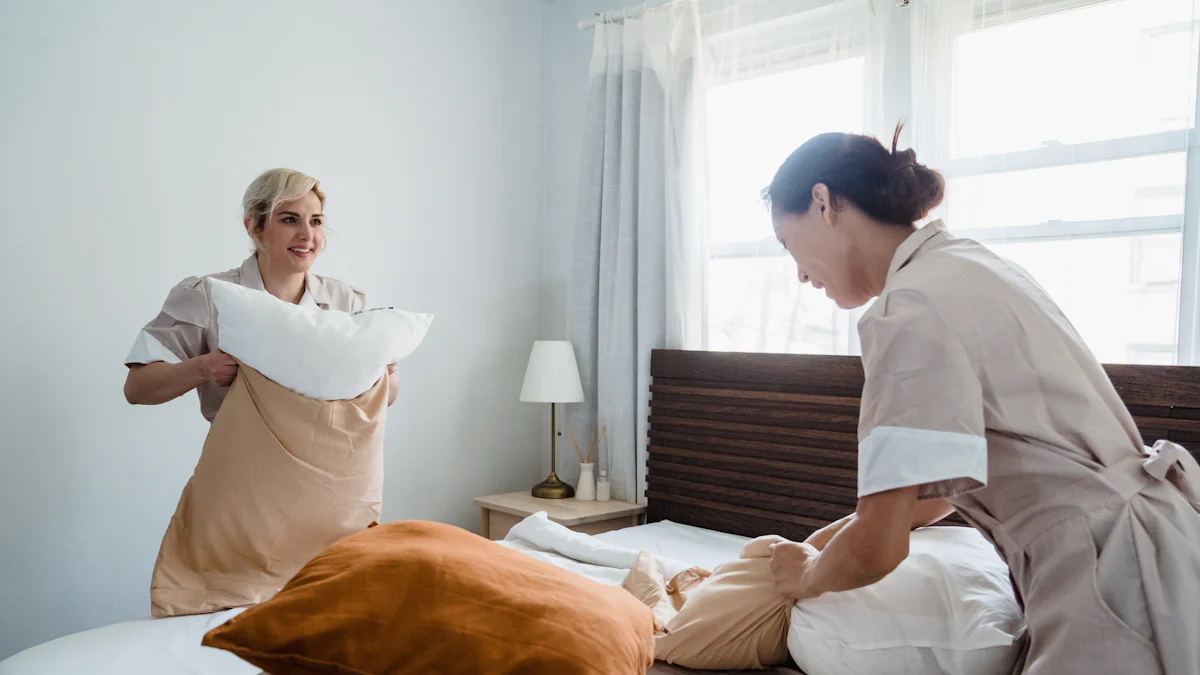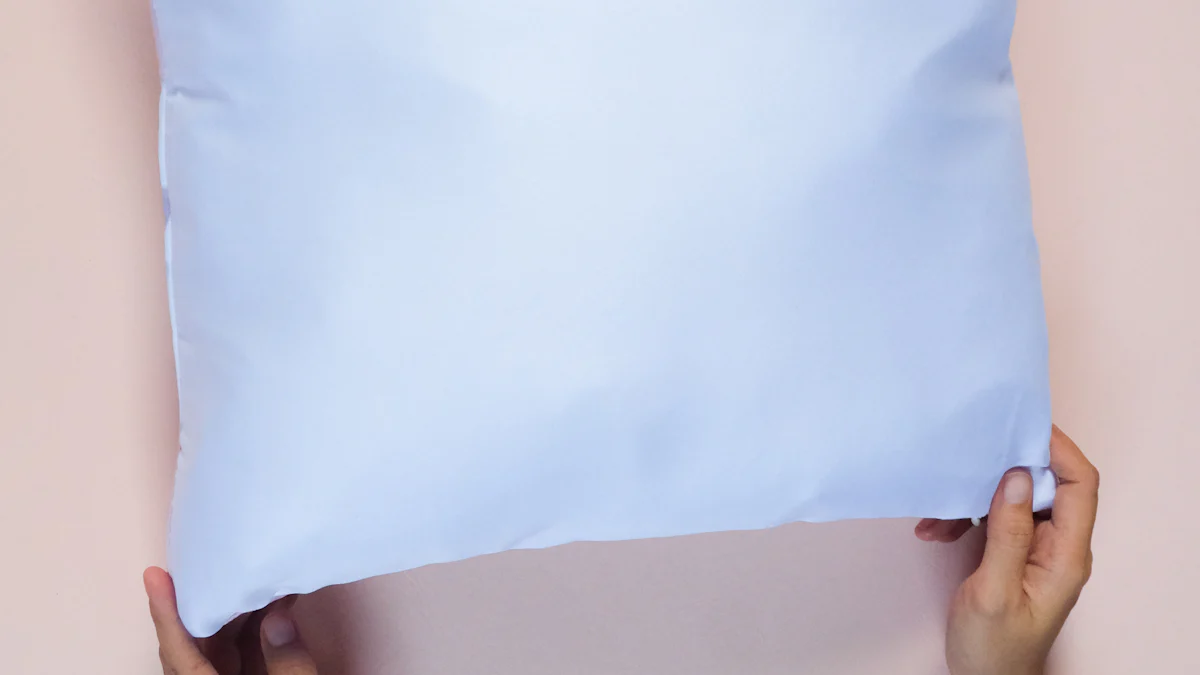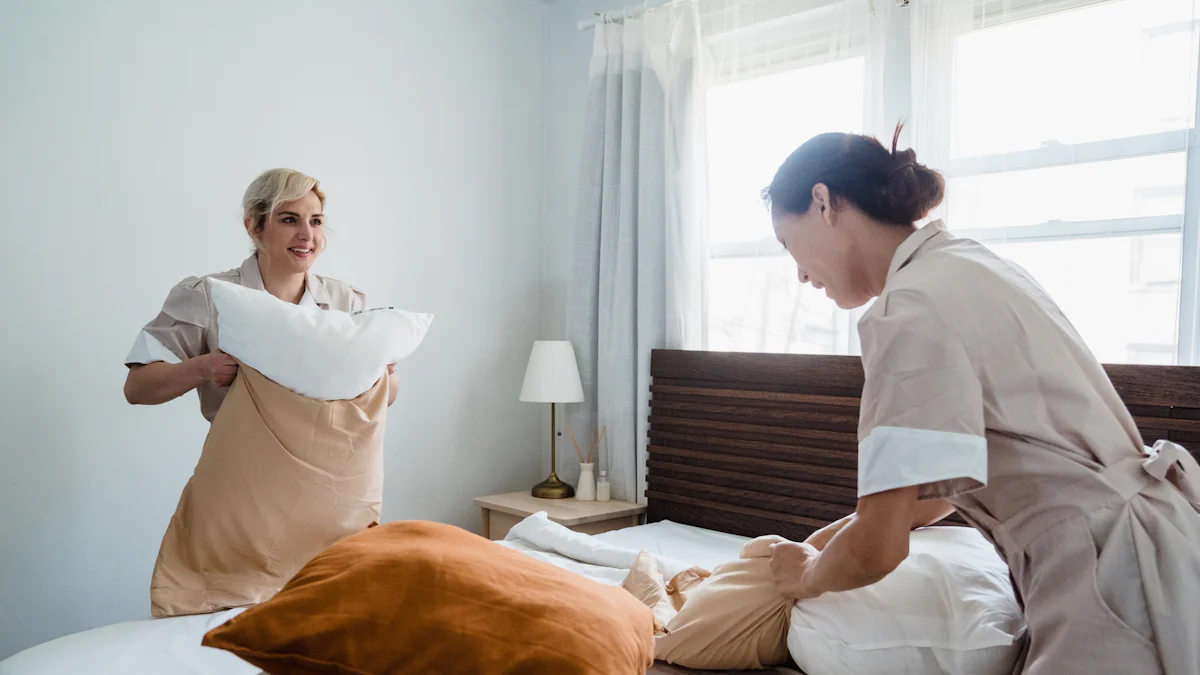
When it comes to ensuring a good night’s sleep, the Pillow Case you rest your head on plays a vital role. Have you considered the benefits of a Microfiber Pillow? These pillows offer a unique blend of comfort and support, crucial for quality rest. In this guide, we aim to assist you in selecting the perfect Microfiber Pillow tailored to your needs. Let’s delve into the world of pillows and discover how choosing the right one can significantly impact your sleep experience.
Understanding Microfiber Pillows
What is a Microfiber Pillow?
Definition and composition
Microfiber pillows, like Microfiber Pillows, are crafted from fine synthetic fibers that offer exceptional softness and durability. The microfiber fabric used in these pillows is finer than most natural fibers, ensuring a luxurious feel while being resistant to pilling and static build-up.
Key characteristics
When it comes to Microfiber Pillows, their key characteristics set them apart. These pillows provide a plush and comfortable surface for your head, promoting a restful night’s sleep. Additionally, the hypoallergenic properties of microfiber make them an excellent choice for individuals with allergies or sensitivities.
Benefits of Microfiber Pillows
Comfort and support
Microfiber Pillows excel in providing both comfort and support. The fine microfiber filling creates a cloud-like experience, cradling your head and neck in perfect alignment. This ensures that you wake up feeling refreshed and rejuvenated every morning.
Hypoallergenic properties
One of the standout features of Microfiber Pillows is their hypoallergenic nature. For those prone to allergies or skin sensitivities, these pillows offer a safe and comfortable sleeping environment. Say goodbye to sneezing fits or discomfort during the night.
Durability and maintenance
Investing in a Microfiber Pillow means investing in long-term comfort. These pillows are not only incredibly durable but also easy to maintain. With proper care, they can retain their shape and quality for an extended period, providing consistent support night after night.
Types of Microfiber Pillows
Different shapes and sizes
Microfiber Pillows come in various shapes and sizes to cater to different preferences. Whether you prefer a standard size pillow or something more specialized like a contour pillow, there’s a microfiber option for everyone.
Firmness levels
Finding the right level of firmness is crucial for a good night’s sleep. Microfiber Pillows offer options ranging from soft to firm, allowing you to choose the perfect balance that suits your sleeping style and comfort needs.
Special features (e.g., cooling, adjustable fill)
Some Microfiber Pillows come with special features like cooling technology or adjustable fill. Cooling pillows are ideal for hot sleepers, while adjustable fill allows you to customize the pillow’s firmness according to your preferences.
Factors to Consider When Choosing a Microfiber Pillow

Sleep Position
Side Sleepers
- For those who prefer sleeping on their side, Microfiber Pillows with a thicker profile and firmer support are recommended. This type of pillow helps maintain proper spinal alignment, reducing strain on the neck and shoulders during the night.
Back Sleepers
- If you find comfort in sleeping on your back, opt for a Microfiber Pillow that offers medium thickness and ample neck support. This pillow design ensures that your head is cradled gently while keeping your spine aligned for a restful night’s sleep.
Stomach Sleepers
- Stomach sleepers require minimal elevation to prevent strain on the lower back and neck. A flat and soft Microfiber Pillow is ideal for this sleeping position, providing just enough cushioning without elevating the head excessively.
Personal Preferences
Firmness Preference
- When selecting a Microfiber Pillow, consider your firmness preference based on your comfort needs. Whether you prefer a softer feel or firmer support, there are microfiber options available to cater to individual preferences.
Loft Height
- The loft height of a pillow plays a crucial role in maintaining proper spinal alignment while you sleep. Choose a Microfiber Pillow with the right loft height that supports your head and neck comfortably, ensuring a good night’s rest without straining your muscles.
Temperature Regulation
- Temperature regulation is essential for a comfortable sleep environment. Microfiber Pillows offer excellent breathability, allowing air to circulate freely and dissipate heat throughout the night. This feature ensures that you stay cool and comfortable while resting.
Health Considerations
Allergies and Sensitivities
- Individuals with allergies or sensitivities can benefit from using hypoallergenic Microfiber Pillows. These pillows are resistant to dust mites and allergens, providing a clean and safe sleeping surface for those prone to allergic reactions.
Neck and Back Pain
- If you experience neck or back pain, choosing the right pillow can make a significant difference in alleviating discomfort. Opt for a supportive Microfiber Pillow that cradles your neck and maintains proper spinal alignment, promoting relief from pain during sleep.
Sleep Disorders
- For individuals with sleep disorders such as insomnia or sleep apnea, finding the right pillow is essential for improving sleep quality. A comfortable Microfiber Pillow can enhance relaxation, reduce pressure points, and contribute to better overall sleep patterns.
How to Test and Evaluate Microfiber Pillows
In-Store Testing
What to look for
- Firmness Levels: Assess the firmness of the Microfiber Pillow by gently pressing on it. A good pillow should offer a balance between softness and support, ensuring a comfortable sleep experience.
- Loft Height: Check the loft height of the pillow to determine if it aligns with your neck’s natural curve. The right loft height promotes proper spinal alignment, reducing strain on your neck and shoulders.
How to test for comfort and support
- Head Alignment: Lay on your back and observe if the pillow keeps your head aligned with your spine. A suitable Microfiber Pillow should cradle your head without causing it to tilt forward or backward.
- Pressure Points: Move around on the pillow to check for any pressure points that may cause discomfort during sleep. A high-quality microfiber pillow will distribute weight evenly, preventing pressure buildup.
Online Shopping Tips
Reading reviews and ratings
- Testimonial from 45th Street Bedding:
“This plush pillow offers a great balance of supple softness.”
- Explore online reviews to gather insights from other users about their experiences with specific Microfiber Pillows. Look for consistent feedback on comfort, durability, and overall satisfaction.
- Consider ratings that highlight key features such as hypoallergenic properties, breathability, and ease of maintenance.
Checking return policies
- Before making a purchase, familiarize yourself with the retailer’s return policy regarding pillows. Ensure that you can return or exchange the Microfiber Pillow if it doesn’t meet your expectations in terms of comfort or quality.
- Look for details on return timelines, conditions for returns, and any associated costs involved in sending back the product.
Understanding product descriptions
- Dive into the product descriptions provided by online retailers to learn more about the features of different Microfiber Pillows available.
- Pay attention to details such as filling composition, hypoallergenic certifications, cooling technologies, and special characteristics like adjustable fill options.
Caring for Your Microfiber Pillow

Cleaning and Maintenance
Washing instructions
- Machine Washable: Ensure that your Microfiber Pillow is machine washable for easy cleaning.
- Gentle Cycle: Wash the pillow on a gentle cycle with mild detergent to maintain its softness.
- Cold Water: Use cold water to prevent damage to the microfiber fabric during washing.
Drying tips
- Low Heat: Dry the Microfiber Pillow on a low-heat setting to avoid shrinking or damaging the fibers.
- Fluff Regularly: Fluff the pillow regularly during drying to maintain its shape and loftiness.
- Air Dry Option: Consider air-drying the pillow in sunlight for a fresh and natural approach.
Longevity and Replacement
Signs it’s time to replace your pillow
- Flattening: If your Microfiber Pillow no longer retains its original shape and appears flat, it may be time for a replacement.
- Lumpiness: Notice any lumps or clumps in the pillow, indicating uneven distribution of filling and reduced comfort.
- Odor Build-Up: A persistent odor even after washing could signal that the pillow is past its prime.
Tips for extending the life of your pillow
- Pillow Protectors: Invest in pillow protectors to shield your Microfiber Pillow from stains, spills, and dust accumulation.
- Regular Fluffing: Fluff your pillow daily to maintain its loft and prevent clumping of the microfiber fill.
- Sunlight Exposure: Occasionally expose your pillow to sunlight to freshen it up naturally and eliminate moisture build-up.
Recapping the essential aspects of selecting a Microfiber Pillow is crucial for enhancing your sleep quality. Consider your personal needs and preferences when choosing the perfect pillow to ensure optimal comfort and support. Remember, factors like firmness, loft height, and temperature regulation play a significant role in your decision-making process. By making an informed choice based on these considerations, you can enjoy restful nights and wake up feeling rejuvenated. Share your experiences or questions in the comments to further enhance your pillow selection journey.
Post time: Jun-25-2024
